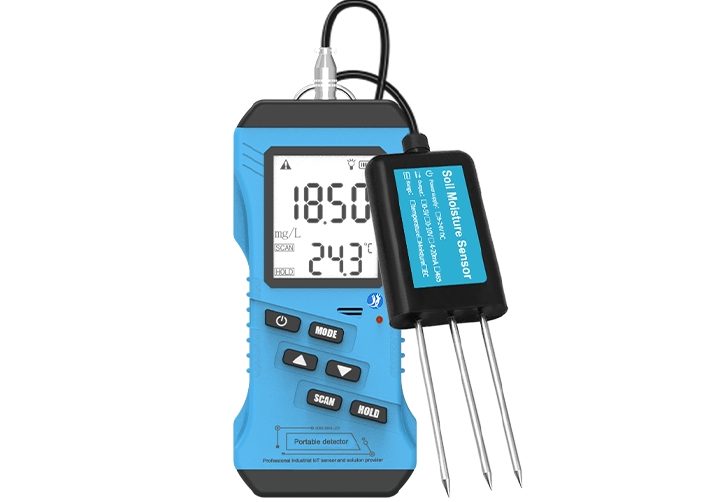What is soil sensor?
Soil sensors are instruments monitor soil moisture conditions. They can be categorized into sensors that monitor moisture, conductivity, temperature, nutrients, pH, and salinity. All these different types of instruments are collectively referred to as soil sensors. With advancements in technology, there are now more advanced soil sensors available that can simultaneously measure soil moisture, temperature, Conductivity, and nutrient content.
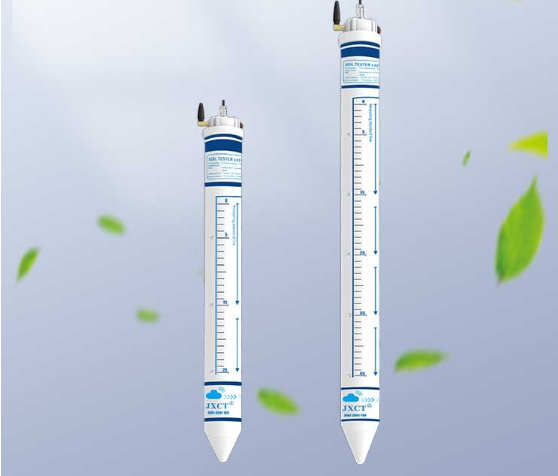
In the process of agricultural cultivation, it is essential to have a timely understanding of the soil condition in order to determine which types of crops to plant based on the soil situation. This includes knowing when to replenish soil moisture and when to fertilize and apply specific types of fertilizers. By doing so, it becomes possible to effectively improve crop yield per acre and increase agricultural income.
What do soil sensors measure?
1. Soil moisture
A low soil moisture content can adversely affect photosynthesis. Prolonged water scarcity can lead to crop withering and death because the soil pores, which contain both water and air, are limited. When there is a lack of moisture, the cohesive forces formed by soil compaction can exert tension on plant roots, causing them to break and leading to plant death. Conversely, excessive moisture reduces air density, preventing plant roots from respiration and resulting in rotting, which can also lead to plant death under severe conditions.
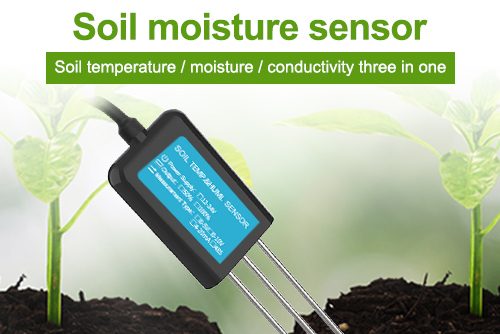
To monitor soil moisture, we can use soil moisture sensors. By analyzing the data, it is possible to decide in time whether irrigation is needed to ensure that the soil moisture is suitable for crop growth.
2. Soil temperature
Optimal soil temperature is beneficial for plant growth. Crop seeds require suitable soil temperatures for germination. When the soil temperature is favorable, crop growth rates accelerate. Utilizing soil temperature sensors to measure soil temperature and maintaining it within the appropriate range for crop growth can ensure increased productivity and improved agricultural income.
3. Soil PH
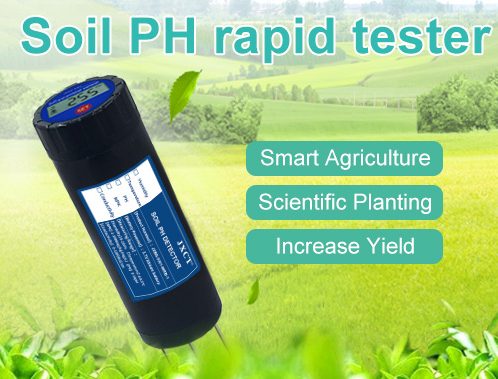
Each plant has an optimal soil pH condition. When the pH is too high or too low, most plants have difficulty growing properly. The use of soil pH sensors to measure pH is conducive to crop growth and helps to reduce the occurrence of diseases and pests. Therefore, soil pH testing is essential for agricultural purposes.
4. Soil NPK
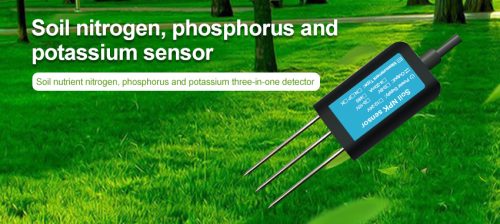
Nitrogen is the primary constituent of proteins and plays a crucial role in promoting stem and leaf growth as well as fruit development. Phosphorus facilitates flower bud differentiation and early flowering and fruiting in tomatoes. Potassium is responsible for promoting sturdy stem and enhancing plant resistance to cold, while also increasing sugar content and vitamin C levels in fruits. Soil NPK sensors can detect nitrogen, phosphorus, potassium and other elements in the soil to provide the nutrients needed by plants and promote plant growth.
5. Soil salinity
Different plants vary greatly in their salt tolerance. Soil salinity can either promote or inhibit plant growth at different levels, depending on soil type and plant species. Soil conductivity sensors can be used to measure the salinity of the soil.
How do soil sensors work?
The working principle of soil sensors can be summarized in the following steps:
Data Acquisition: Soil sensors typically consist of a sensing element that measures specific properties of the soil, such as soil moisture, temperature, pH value, electrical conductivity, etc.
Signal Conversion: The sensing element converts the measured data into electrical signals. Typically, the sensor’s built-in circuitry processes these signals into digital format for easier transmission and processing.
Signal Transmission: The digital signals are transmitted to a computer or controller via wireless or wired communication methods.
Data Processing: Upon receiving the digital signals, the computer or controller analyzes and processes the data to extract useful information, such as soil moisture, temperature, pH value, etc.
Device Control: Based on the analyzed results, the controller can automatically control corresponding devices, such as irrigation systems, weather stations, etc., enabling automated management.
In summary, the working principle of soil sensors involves converting physical or chemical parameters of the soil into digital signals, transmitting them to a control endpoint for analysis and processing, and facilitating soil condition management.
Types of soil sensors
Regarding the soil, people generally use soil sensors for monitoring according to their needs. What types of soil sensors are there?
Soil moisture sensor
Soil moisture sensors, also known as soil humidity sensors, are primarily composed of stainless steel probes and waterproof shells. They can be buried in the soil for long-term use and provide online measurements of both surface and deep soil moisture. Compared to other types of soil sensors, soil moisture sensors have a wider range of variations. Based on their measurement principles, they are generally classified into capacitive, resistive, and ion-sensitive types.
Capacitive
This type of soil sensors employ the moisture-sensitive capacitor as its component, with commonly used materials being metal oxides and high polymer polymers. The materials used in capacitive sensors possess excellent water molecule adsorption capabilities. The higher the humidity at the measurement location, the more moisture is adsorbed onto the materials. These soil sensors are capable of converting the capacitance value into an electrical signal, facilitating data analysis for users.
Resistive
Resistive soil sensors typically use a moisture-sensitive resistor, which is commonly made of dielectric materials, semiconductors, or porous ceramics. These materials possess good water absorption capabilities, and their resistivity/conductivity changes significantly with humidity when they absorb moisture. The change in resistance value generates an electrical signal, which is then displayed on the instrument for analysis and interpretation.
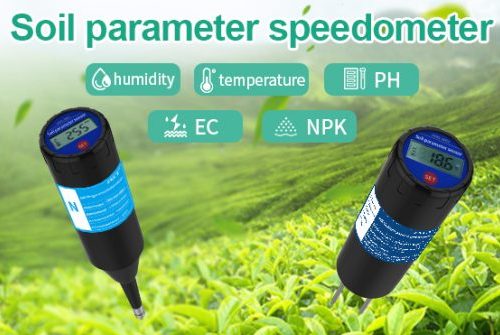
Ion-sensitive
The Ion-Sensitive Field-Effect Transistor (ISFET) is a type of semiconductor biosensor that was invented by P. Bergveld in the 1970s. ISFET directly contacts the measured solution, which contains an ion-buffering solution, through different sensitive thin-film materials on the gate electrode. This enables the measurement of ion concentrations in the solution. The ion-sensitive sensor of an ion-type soil sensor consists of a sensitive membrane and a transducer. The sensitive membrane can recognize the concentration and type of ions, while the transducer converts the sensed information into recognizable electrical signals.
Soil conductivity sensor
Soil conductivity sensors measure the changes in soil conductivity to reflect variations in soil salinity. Soil conductivity is an indicator of both salt content and moisture content in the soil. Soil conductivity sensors use changes in resistance to output conductivity values, providing farmers with information about soil salinity and moisture content. This helps in better management and maintenance of plant growth.
Soil PH sensor
Soil PH level not only affects the ionic form and availability of large and trace elements in the soil but also has a significant impact on the life activities of microorganisms in the soil. Too low or too high PH will affect nutrient absorption.
The soil PH sensor is composed of a metal sensor and a functional value-switching device. As the core hardware system, the metal sensor is in direct contact with the soil during detection and uses the oxidation reaction in the chemical reaction to generate current. The size of the current value will drive the different ph value data corresponding to the ammeter and display the value directly through the host conversion.
Soil NPK sensor
Soil NPK sensors are used to detect the content of nitrogen, phosphorus, and potassium in the soil. They utilize a physical sensing method rather than a chemical one. These sensors are inserted into the soil to monitor changes in soil nutrient data over time. Soil fertility can be assessed by measuring the content of nitrogen, phosphorus and potassium. Provide people with valuable information about the condition of the soil.
